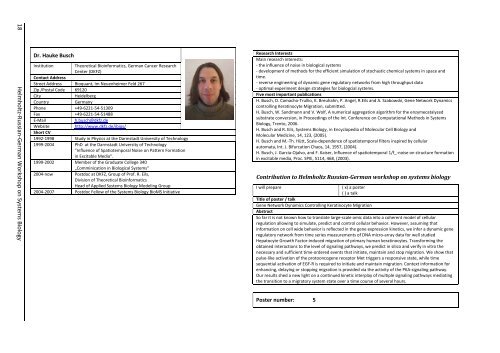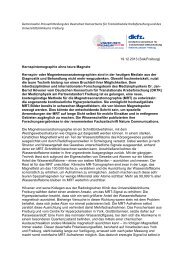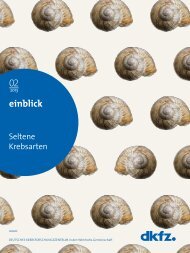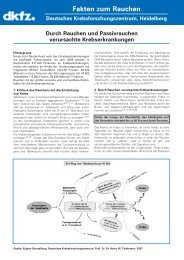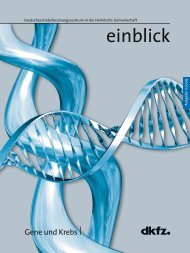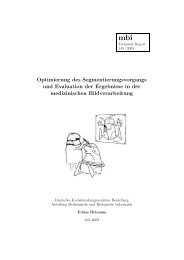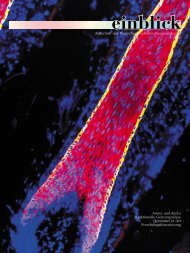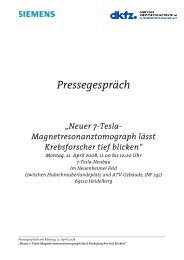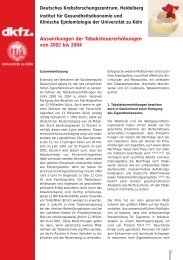Helmholtz Russian-German Workshop on Systems Biology Moscow ...
Helmholtz Russian-German Workshop on Systems Biology Moscow ...
Helmholtz Russian-German Workshop on Systems Biology Moscow ...
Create successful ePaper yourself
Turn your PDF publications into a flip-book with our unique Google optimized e-Paper software.
18 <str<strong>on</strong>g>Helmholtz</str<strong>on</strong>g>‐<str<strong>on</strong>g>Russian</str<strong>on</strong>g>‐<str<strong>on</strong>g>German</str<strong>on</strong>g> <str<strong>on</strong>g>Workshop</str<strong>on</strong>g> <strong>on</strong> <strong>Systems</strong> <strong>Biology</strong><br />
Dr. Hauke Busch<br />
Instituti<strong>on</strong> Theoretical Bioinformatics, <str<strong>on</strong>g>German</str<strong>on</strong>g> Cancer Research<br />
Center (DKFZ)<br />
C<strong>on</strong>tact Address<br />
Street Address Bioquant, Im Neuenheimer Feld 267<br />
Zip /Postal Code 69120<br />
City Heidelberg<br />
Country <str<strong>on</strong>g>German</str<strong>on</strong>g>y<br />
Ph<strong>on</strong>e +49‐6221‐54‐51309<br />
Fax +49‐6221‐54‐51488<br />
E‐Mail h.busch@dkfz.de<br />
Website http://www.dkfz.de/ibios/<br />
Short CV<br />
1992‐1998 Study in Physics at the Darmstadt University of Technology<br />
1999‐2004 PhD at the Darmstadt University of Technology<br />
”Influence of Spatiotemporal Noise <strong>on</strong> Pattern Formati<strong>on</strong><br />
in Excitable Media“.<br />
1999‐2002 Member of the Graduate College 340<br />
„Comminicati<strong>on</strong> in Biological <strong>Systems</strong>“<br />
2004‐now Postdoc at DKFZ, Group of Prof. R. Eils,<br />
Divisi<strong>on</strong> of Theoretical Bioinformatics<br />
Head of Applied <strong>Systems</strong> <strong>Biology</strong> Modeling Group<br />
2004‐2007 Postdoc Fellow of the <strong>Systems</strong> <strong>Biology</strong> BioMS Initiative<br />
Research Interests<br />
Main research interests:<br />
‐ the influence of noise in biological systems<br />
‐ development of methods for the efficient simulati<strong>on</strong> of stochastic chemical systems in space and<br />
time.<br />
‐ reverse engineering of dynamic gene regulatory networks from high throughput data<br />
‐ optimal experiment design strategies for biologcial systems.<br />
Five most important publicati<strong>on</strong>s<br />
H. Busch, D. Camacho‐Trullio, K. Breuhahn, P. Angel, R.Eils and A. Szabowski, Gene Network Dynamics<br />
c<strong>on</strong>trolling Keratinocyte Migrati<strong>on</strong>, submitted.<br />
H. Busch, W. Sandmann and V. Wolf, A numerical aggregati<strong>on</strong> algorithm for the enzymecatalyzed<br />
substrate c<strong>on</strong>versi<strong>on</strong>, in Proceedings of the Int. C<strong>on</strong>ference <strong>on</strong> Computati<strong>on</strong>al Methods in <strong>Systems</strong><br />
<strong>Biology</strong>, Trento, 2006.<br />
H. Busch and R. Eils, <strong>Systems</strong> <strong>Biology</strong>, in Encyclopedia of Molecular Cell <strong>Biology</strong> and<br />
Molecular Medicine, 14, 123, (2005).<br />
H. Busch and M.‐Th. Hütt, Scale‐dependence of spatiotemporal filters inspired by cellular<br />
automata, Int. J. Bifurcati<strong>on</strong> Chaos, 14, 1957, (2004).<br />
H. Busch, J. Garcia‐Ojalvo, and F. Kaiser, Influence of spatiotemporal 1/f_‐noise <strong>on</strong> structure formati<strong>on</strong><br />
in excitable media, Proc. SPIE, 5114, 468, (2003).<br />
C<strong>on</strong>tributi<strong>on</strong> to <str<strong>on</strong>g>Helmholtz</str<strong>on</strong>g> <str<strong>on</strong>g>Russian</str<strong>on</strong>g><str<strong>on</strong>g>German</str<strong>on</strong>g> workshop <strong>on</strong> systems biology<br />
I will prepare<br />
( x) a poster<br />
( ) a talk<br />
Title of poster / talk<br />
Gene Network Dynamics C<strong>on</strong>trolling Keratinocyte Migrati<strong>on</strong><br />
Abstract<br />
So far it is not known how to translate large‐scale omic data into a coherent model of cellular<br />
regulati<strong>on</strong> allowing to simulate, predict and c<strong>on</strong>trol cellular behavior. However, assuming that<br />
informati<strong>on</strong> <strong>on</strong> cell wide behavior is reflected in the gene expressi<strong>on</strong> kinetics, we infer a dynamic gene<br />
regulatory network from time series measurements of DNA micro‐array data for well studied<br />
Hepatocyte Growth Factor‐induced migrati<strong>on</strong> of primary human keratinocytes. Transforming the<br />
obtained interacti<strong>on</strong>s to the level of signaling pathways, we predict in silico and verify in vitro the<br />
necessary and sufficient time‐ordered events that initiate, maintain and stop migrati<strong>on</strong>. We show that<br />
pulse‐like activati<strong>on</strong> of the proto<strong>on</strong>cogene receptor Met triggers a resp<strong>on</strong>sive state, while time<br />
sequential activati<strong>on</strong> of EGF‐R is required to initiate and maintain migrati<strong>on</strong>. C<strong>on</strong>text informati<strong>on</strong> for<br />
enhancing, delaying or stopping migrati<strong>on</strong> is provided via the activity of the PKA‐signaling pathway.<br />
Our results shed a new light <strong>on</strong> a c<strong>on</strong>tinued kinetic interplay of multiple signaling pathways mediating<br />
the transiti<strong>on</strong> to a migratory system state over a time course of several hours.<br />
Poster number: 5


